

Libya

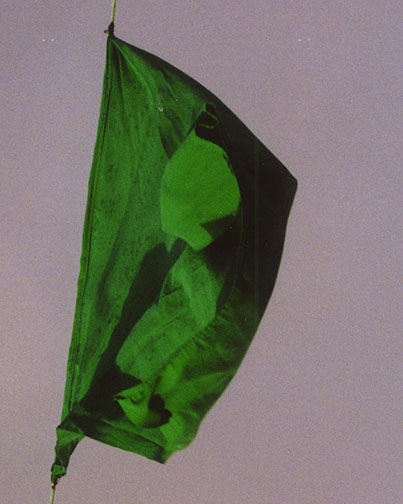
the flag
(a field of Green)
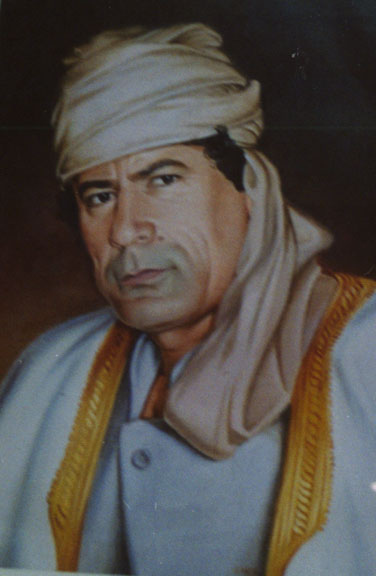
Colonel Muammar Al Qadhafi
Libya, in full, Socialist People's Libyan Arab Jamahiriyah,
nation of northern Africa, comprising the former Italian colonies of
Tripolitania, Cyrenaica, and Fezzan.

People in the street at dusk
(the Qadhafi poster in the background)
It is bounded on the north by the Mediterranean Sea, on the east by Egypt, on the southeast by the Republic of Sudan, on the south by Chad and Niger, on the west by Algeria, and on the northwest by Tunisia. The area of Libya, one of the largest countries in Africa, is 1,757,000 sq km (678,400 sq mi). Tripoli is the capital and largest city.
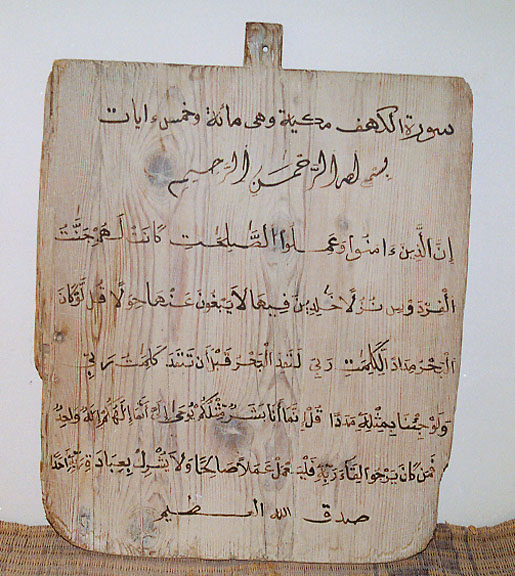
About 90 percent of Libya is made up of barren, rock-strewn plains and sand sea,
with two small areas of hills rising to about 900 m (about 3,000 ft) in the
northwest and northeast. In the south the land rises to the Tibesti massif along
the Chad border.
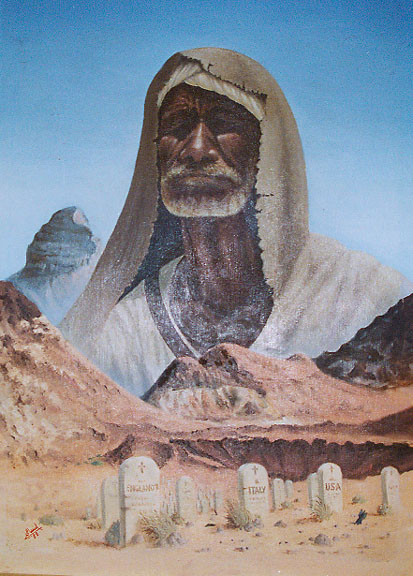
Omar al-Mukhtar
Lion of the Desert
(Who fought the Italian invasion 1911-1931,
and is the symbol of resisting all foreign interference)
Climatic conditions in Libya are characterized by extreme heat and aridity. Desert and subdesert regions have little precipitation. On the coast the annual rainfall rarely exceeds 380 mm (15 in).
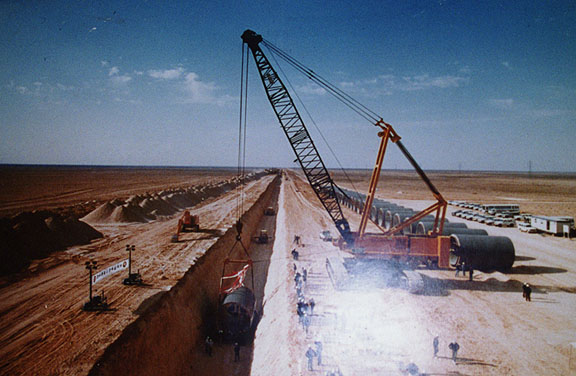
the laying of the pipe for the
Man Made River
(painting from the Museum)
More Photos of the "Man Made River" project
The principal resource of Libya is petroleum. Natural gas, gypsum, limestone, marine salt, potash, and natron are also exploited.
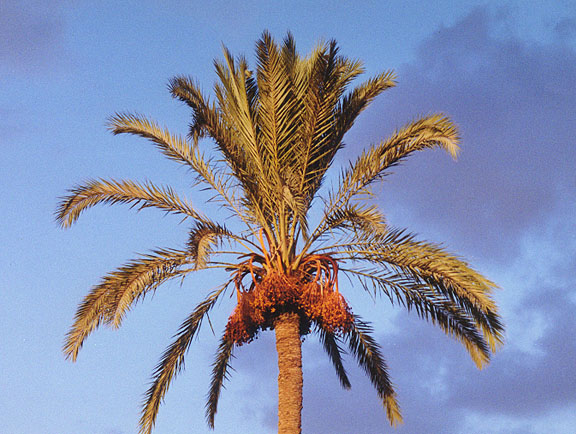
a date palm
Most of Libya is either devoid of vegetation or supports only sparse growth. Date palms and olive and orange trees grow in the scattered oases, and junipers and mastic trees are found in the higher elevations. Wildlife includes desert rodents, hyena, gazelle, and wildcat. Eagles, hawks, and vultures are common.
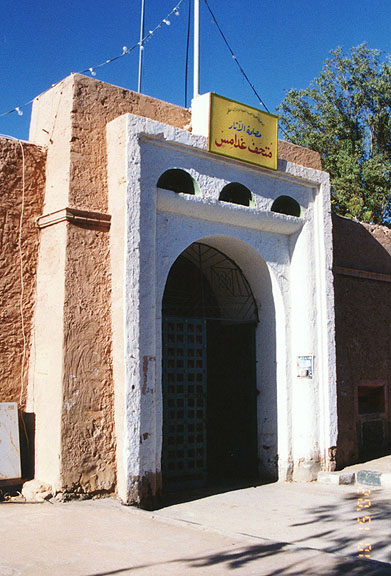
Ghadames Museum
Photos of the Town and the Museum
More Photos from "Old Town" Ghadames
The indigenous population of Libya is mostly Berber and Arab in origin; about 17
percent of the population consists of foreign workers and their families. Some
87 percent of the people live in urban areas, although some Libyans still live
in nomadic or semi nomadic groups.
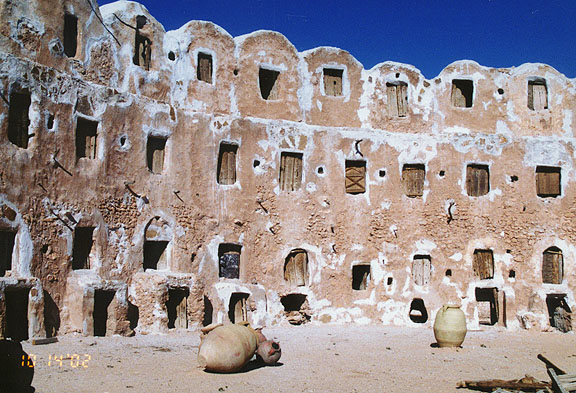
Berber storage rooms
More Photos of the Berber grain storage chambers
At the 1984 census, Libya had a population of 3,637,488. The 2000 estimated population was 5,114,032, giving the country an overall population density of 3 persons per sq km (8 per sq mi). The population, however, is unevenly distributed; more than two-thirds live in the more densely settled coastal areas.
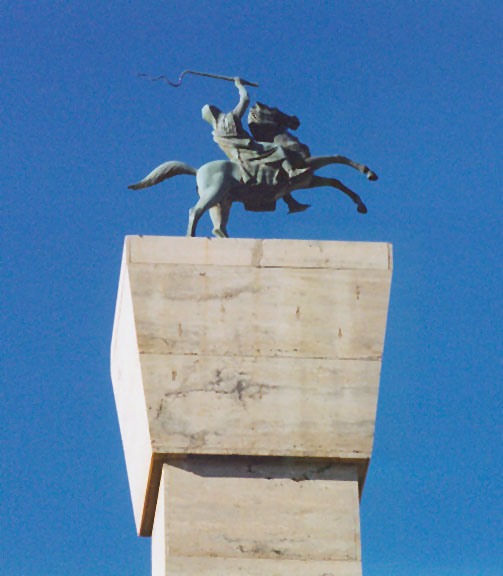
on Green Square
The ports of Tripoli (population, 1996 estimate, greater city, 1.8 million) and
Banghâzî (1994 estimate; 800,000) are the two largest urban areas.
Islam is the state religion, and about 97 percent of all Libyans are Sunni Muslim. A small number are Roman Catholic. Arabic is the official language, although Berber is sometimes spoken and English and Italian are used in trade.
Text by Microsoft Encarta

war cemetery
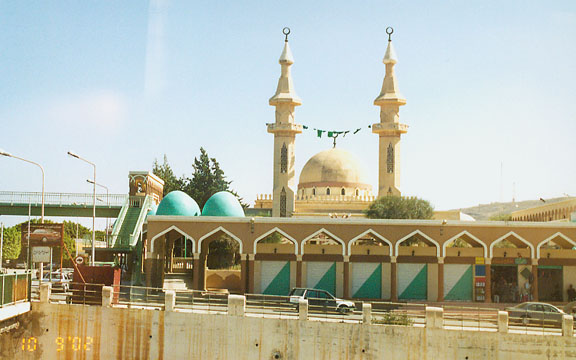
Derna

the "challenge flight"
when Colonel Muammar Al Qadhafi flew to Cairo in defiance of the
embargo
A New York Times (1/19/03) article on Colonel Muammar Al Qadhafi
![]()
Roman Sites in Libya
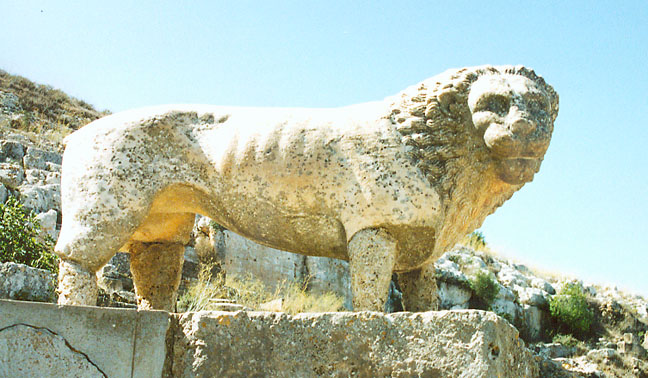
Cyrene
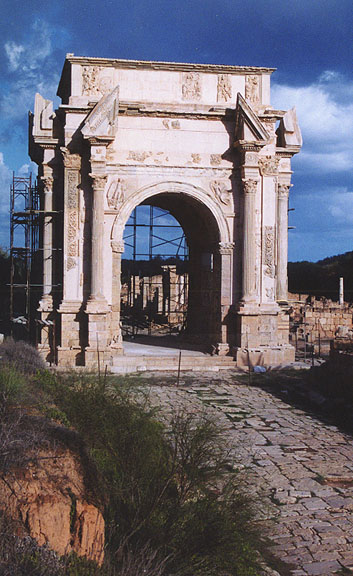
Arch honoring
Roman emperor Lucius Septimius
Severus (AD 146-211)
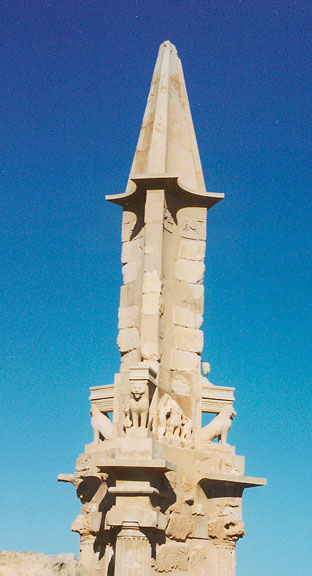
Puno-Hellenistic Mausoleum of Bes
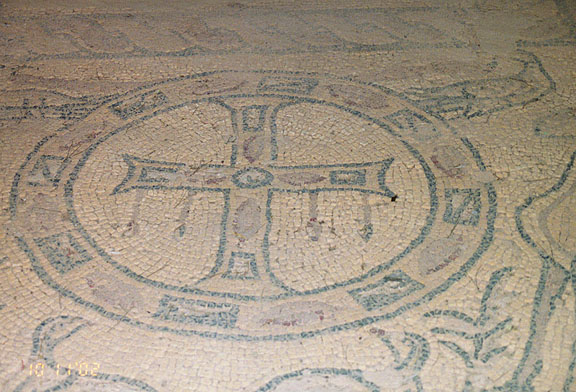
Byzantine mosaic
More Photos of the Byzantine Mosaics at Qasr Libya
More of Qasr Mosaics and Byzantine church at Lathrun
![]()
![]()